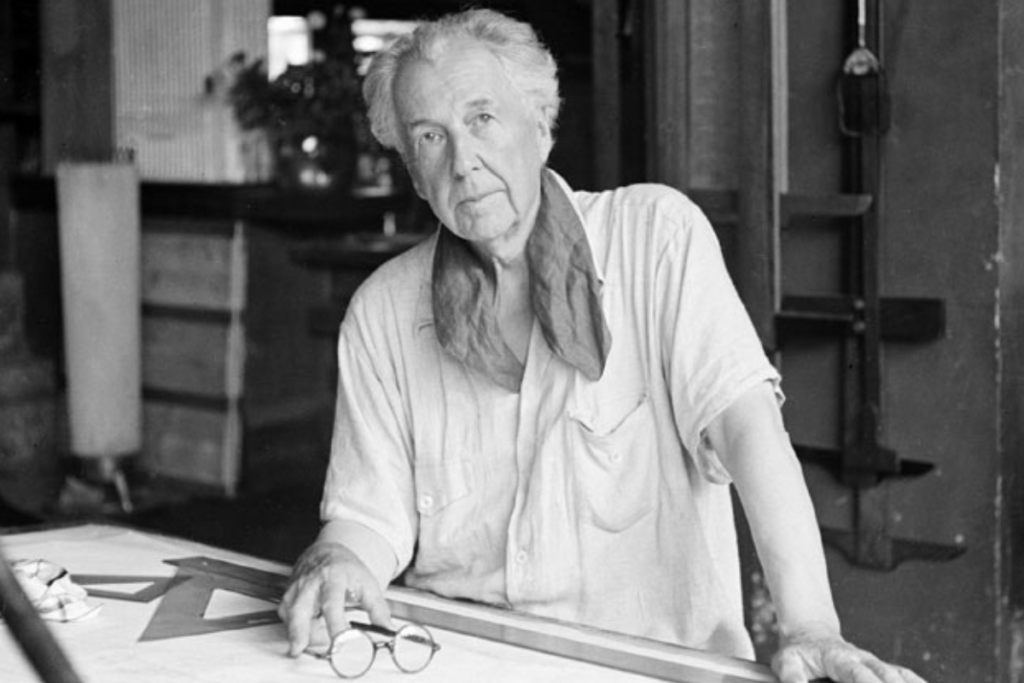
Frank Lloyd Wright, a renowned American architect, is widely regarded as a pioneer in the field of modern architecture. With his innovative concepts and distinctive style, Wright left an indelible mark on the architectural landscape. The visionary architect, who lived from 1867 to 1959, embraced nature, organic design principles, and functional spaces, challenging the conventional norms of his time. In this blog post, we delve into the life and works of Frank Lloyd Wright, exploring his revolutionary contributions that continue to shape the world of architecture today.
Early Life and Education
Birth and Family Background
Frank Lloyd Wright was born on June 8, 1867, in Richland Center, Wisconsin. He came from a family of Welsh and English descent. His father, William Carey Wright, was a musician and a preacher, while his mother, Anna Lloyd Jones, came from a family of Unitarian ministers. Growing up in a household with a strong religious influence, Wright developed a sense of spirituality that later influenced his architectural philosophy.
Education and Influences
Wright’s early education was unremarkable, but his interest in architecture began to emerge during his teenage years. In 1885, at the age of 18, he enrolled in the University of Wisconsin-Madison to study civil engineering. However, financial constraints forced him to drop out after just two years, and he started working as a draftsman at a local architecture firm in Chicago.
During his time in Chicago, Wright had the opportunity to work for several prominent architects, including Louis Sullivan. Sullivan’s philosophy of “form follows function” greatly influenced Wright’s architectural style and approach. Sullivan believed that architecture should be in harmony with its natural surroundings and that every building should serve its purpose efficiently.
Wright’s experience working under Sullivan and his exposure to the rapidly expanding city of Chicago further fueled his passion for architecture. He started experimenting with new ideas and concepts, challenging conventional design principles.
Explore more about Frank Lloyd Wright’s childhood home and its impact on his architectural journey.
As Wright delved deeper into his architectural career, he drew inspiration from various sources, including Japanese art and culture, the Arts and Crafts movement, and the concept of organic architecture. These influences played a significant role in shaping his unique design philosophy, which aimed to create harmonious structures that seamlessly blended with their natural surroundings.
Overall, Wright’s early life and education laid the foundation for his future success as an iconic American architect. His upbringing, exposure to different architectural ideas, and personal experiences all contributed to his innovative approach and his desire to push the boundaries of design.
Architectural Style and Philosophy
Frank Lloyd Wright, a renowned American architect, was known for his unique architectural style and philosophy. His approach to design was heavily influenced by nature and the environment, and he developed a concept called Organic Architecture.
Organic Architecture Concept
Wright believed that buildings should harmonize with their natural surroundings and be designed in a way that enhances the lives of its inhabitants. This concept, known as Organic Architecture, emphasizes the integration of the built environment with nature. Unlike rigid and boxy structures, Wright’s buildings often featured flowing lines, open spaces, and a seamless connection between indoor and outdoor spaces.
Influence of Nature and Environment
Wright’s deep appreciation for nature and its influence on his work can be seen in his choice of materials, colors, and spatial arrangements. He believed that a well-designed building should not only complement its surroundings but also be in harmony with the natural elements such as sunlight, wind, and water.
Wright’s designs often incorporated large windows to maximize natural light and blur the boundaries between interior and exterior spaces. He used natural materials such as stone, wood, and glass to create a sense of warmth and connection to the natural world. By incorporating these elements, Wright aimed to create a sense of serenity and tranquility within his architecture.
Principles of Design
Wright had a distinct set of design principles that guided his work. One of his key principles was the idea of “form follows function,” which meant that the design of a building should be dictated by its purpose and function. He believed that every element of a building should serve a specific purpose and contribute to the overall design.
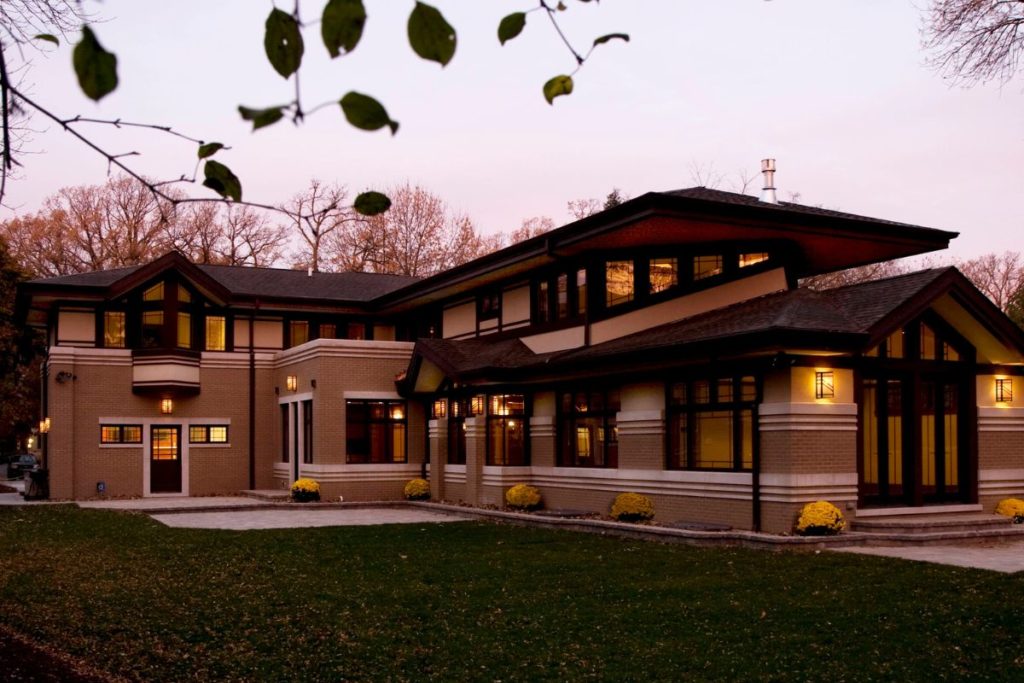
Another important principle was the integration of architecture and the surrounding landscape. Wright aimed to create a seamless connection between the built environment and nature, blurring the boundaries between indoor and outdoor spaces. This was achieved through his use of open floor plans, large windows, and incorporating natural elements in his designs.
Additionally, Wright emphasized the importance of sustainability and efficiency in his designs. He believed in using local materials and techniques that were appropriate for the climate and environment. By doing so, he aimed to create buildings that were not only aesthetically pleasing but also environmentally friendly and energy-efficient.
Overall, Frank Lloyd Wright’s architectural style and philosophy were characterized by his deep respect for nature, his emphasis on functionality, and his innovative approach to design. His legacy continues to inspire architects and designers around the world, leaving a lasting impact on the field of architecture.
Notable Projects
Frank Lloyd Wright, one of the most influential architects of the 20th century, left a lasting legacy through his notable projects. From residential masterpieces to iconic cultural institutions, his creations continue to inspire and captivate audiences worldwide.
Fallingwater
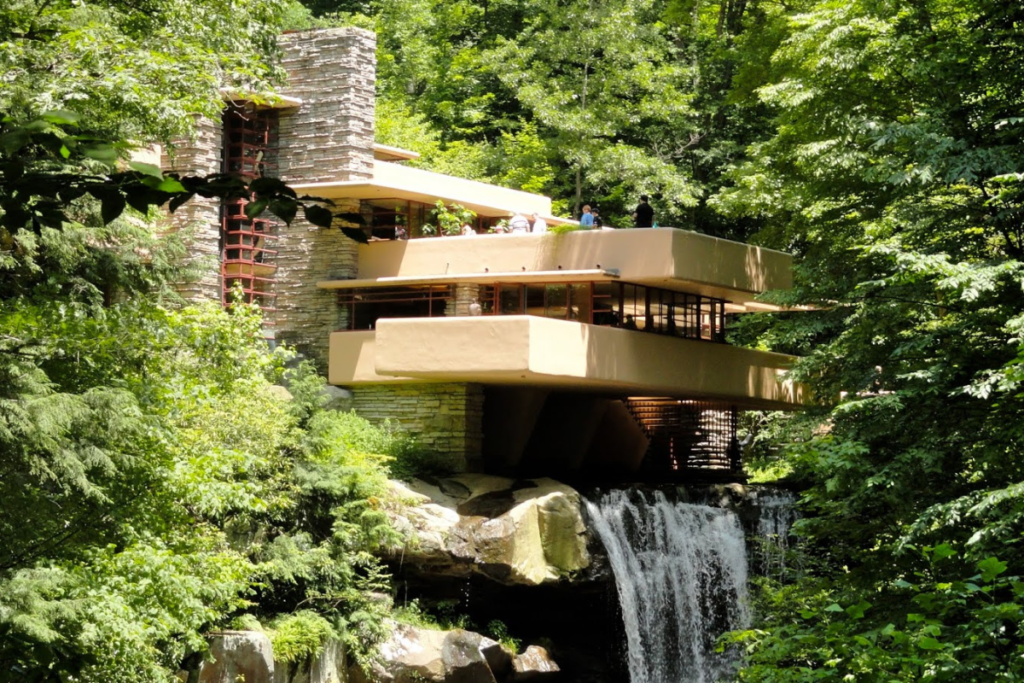
Fallingwater, located in Mill Run, Pennsylvania, is perhaps Wright’s most famous residential project. Completed in 1939, this architectural marvel seamlessly integrates with its natural surroundings, appearing to hover over a cascading waterfall. With its cantilevered balconies and expansive glass walls, Fallingwater exemplifies Wright’s philosophy of blending nature and architecture harmoniously.
Guggenheim Museum
The Guggenheim Museum in New York City is a testament to Wright’s vision and architectural innovation. Completed in 1959, this iconic museum showcases a distinctive spiraling design, reminiscent of a nautilus shell. The continuous ramp that winds its way upward allows visitors to experience a seamless flow of artwork, creating a unique and immersive museum-going experience.
Robie House
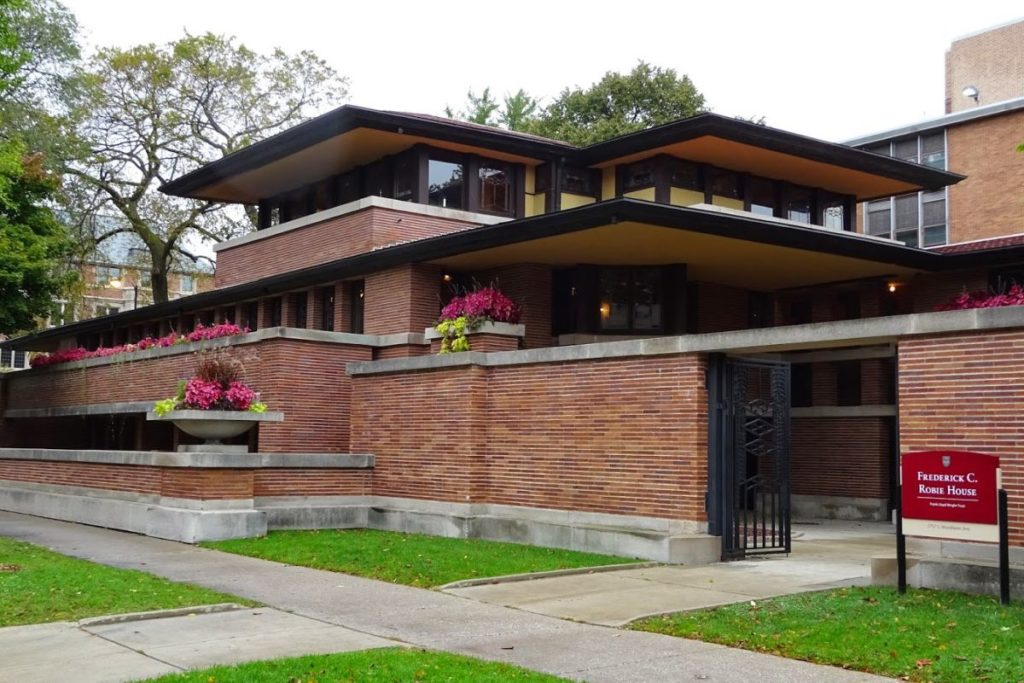
The Robie House in Chicago, Illinois, embodies Wright’s Prairie School architectural style. Completed in 1910, this residence is a prime example of Wright’s emphasis on horizontal lines, open floor plans, and integration with nature. The Robie House’s striking geometric design and use of natural materials exemplify Wright’s commitment to creating functional yet visually stunning spaces.
Taliesin West
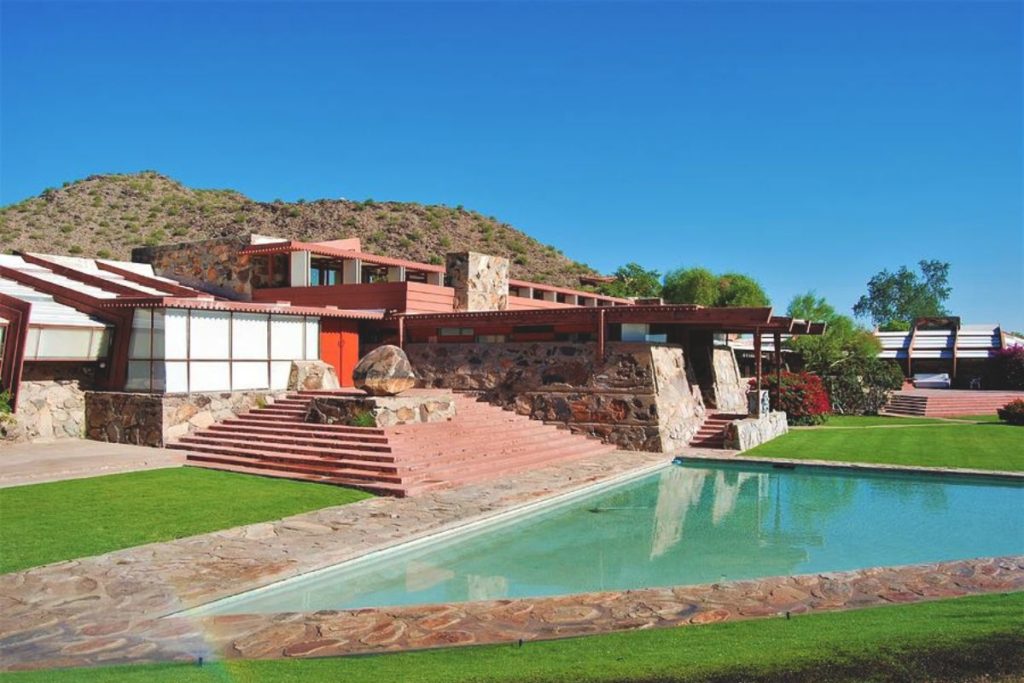
Nestled in the desert landscape of Scottsdale, Arizona, Taliesin West served as Frank Lloyd Wright’s winter home and studio. Completed in 1937, this architectural masterpiece incorporates local materials and indigenous design elements, seamlessly blending with its natural surroundings. Taliesin West showcases Wright’s ability to create spaces that are not only aesthetically pleasing but also deeply connected to their environment.
From Fallingwater’s breathtaking integration with nature to the Guggenheim Museum’s captivating spiral design, Wright’s notable projects continue to leave a lasting impression on the architectural world. Each project showcases his visionary approach and commitment to pushing the boundaries of design. Through these iconic creations, Frank Lloyd Wright’s architectural genius and innovation continue to inspire generations to come.
Related: Learn more about Frank Lloyd Wright’s architectural style and philosophy
Influence and Legacy
Frank Lloyd Wright’s influence and legacy in the world of architecture are unmatched. His groundbreaking ideas and innovative designs continue to shape modern architecture, inspiring architects and captivating enthusiasts around the globe.
Impact on Modern Architecture
Wright’s impact on modern architecture cannot be overstated. He revolutionized the field with his concept of organic architecture, which sought to harmonize built structures with their natural surroundings. This approach prioritized open spaces, integration of natural light, and the use of local materials. His iconic works such as Fallingwater and the Guggenheim Museum stand as testament to his visionary approach.
Wright’s emphasis on functional spaces and the seamless fusion of indoor and outdoor environments have become hallmarks of modern architecture. His designs challenged traditional norms, redefining the possibilities of structure, form, and aesthetics. Architects today draw inspiration from his principles, incorporating elements of organic architecture into their own designs.
Influence on Architects
Frank Lloyd Wright’s innovative ideas and distinctive style have had a lasting influence on architects worldwide. His work continues to serve as a source of inspiration, pushing contemporary architects to think outside the box and explore new design possibilities.
Architects who have been influenced by Wright’s visionary approach often incorporate elements of his designs into their own works. The principles of organic architecture, the use of natural materials, and the emphasis on creating harmony between the built environment and nature are all evident in many architectural projects influenced by Wright.
Preservation of Wright’s Works
Preserving the legacy of Frank Lloyd Wright is of paramount importance. Efforts have been made to protect and maintain his iconic structures, ensuring that future generations can appreciate and study his architectural genius.
Organizations such as the Frank Lloyd Wright Foundation and the Frank Lloyd Wright Building Conservancy work tirelessly to safeguard Wright’s creations. Restoration projects aim to retain the original integrity of his buildings, while also incorporating modern advancements in structural integrity and sustainability.
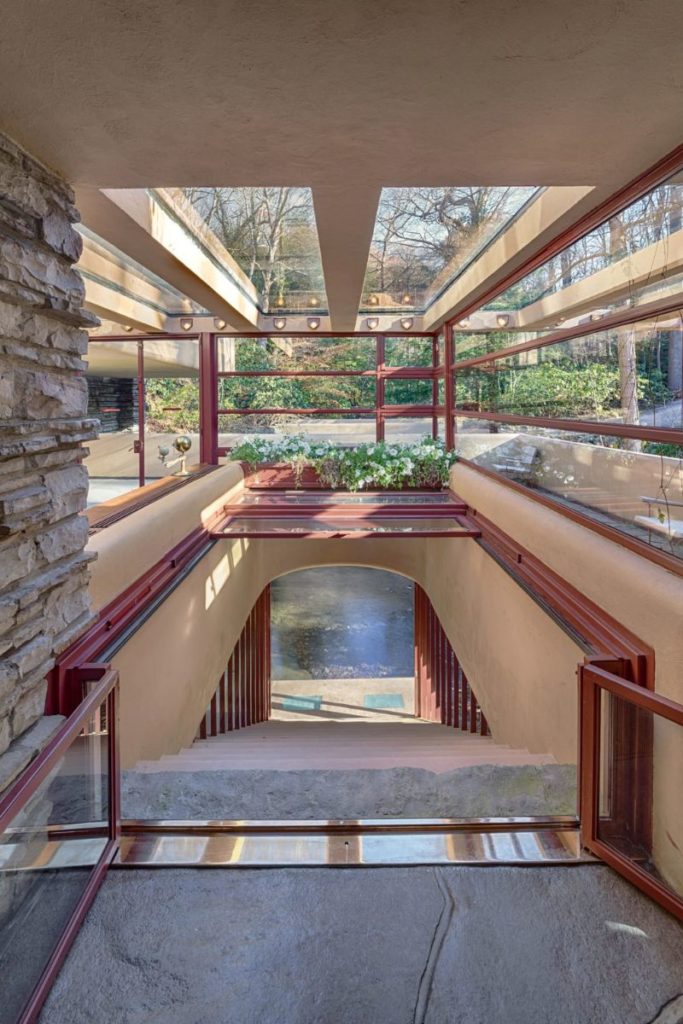
Wright’s buildings, including Fallingwater, the Guggenheim Museum, and Unity Temple among others, have become pilgrimage sites for architecture enthusiasts and scholars alike. These landmarks showcase his exceptional talent and continue to captivate audiences with their beauty and ingenuity.
In conclusion, Frank Lloyd Wright’s influence on modern architecture is undeniable. His groundbreaking ideas, innovative designs, and dedication to creating harmony between the built environment and nature have left an indelible mark on the architectural world. Architects continue to draw inspiration from his pioneering concepts, and efforts to preserve his legacy ensure that his genius will be celebrated for generations to come.
Note: The stock image placeholders provided in plain text should be replaced with actual images before publishing the blog post.
Conclusion
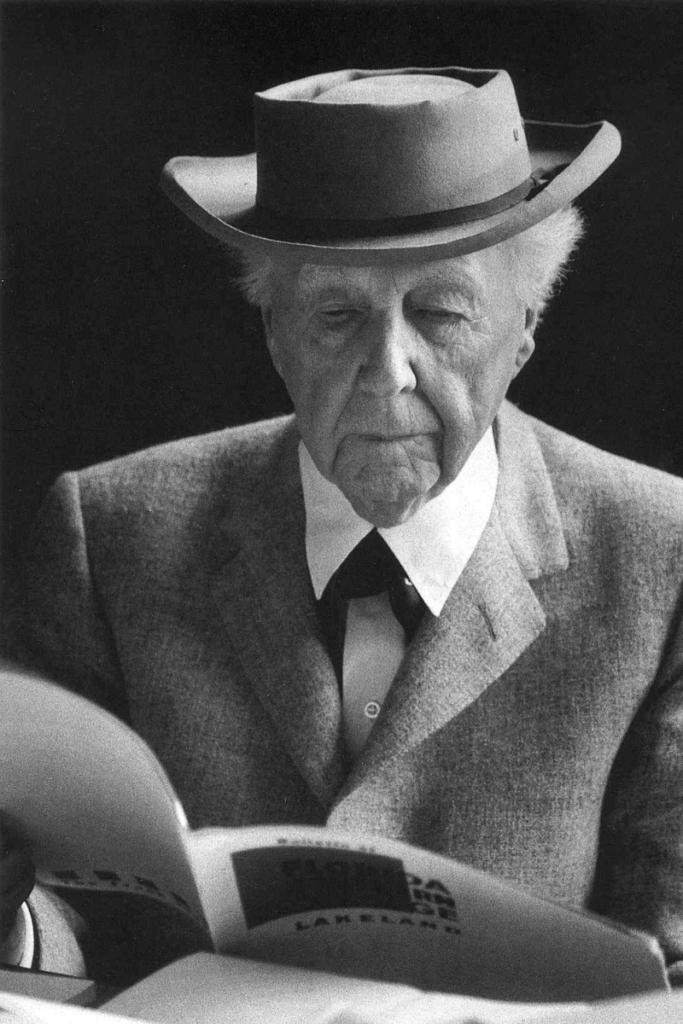
In conclusion, Frank Lloyd Wright was an architectural genius whose innovative designs continue to inspire and influence the field of architecture today. His philosophy of organic architecture, which sought to harmonize buildings with their natural surroundings, has left a lasting impact on the way we approach design. From his iconic residential projects, such as Fallingwater and the Robie House, to his visionary urban planning concepts, such as the Broadacre City, Wright’s work embodies a timeless beauty and a commitment to sustainable design principles. As we look to the future, we can still learn valuable lessons from Wright’s approach to architecture, embracing the integration of nature, functionality, and aesthetics.
